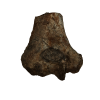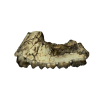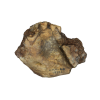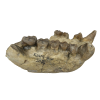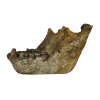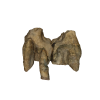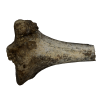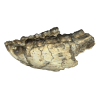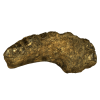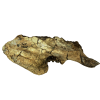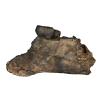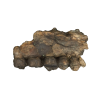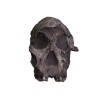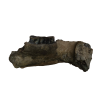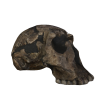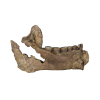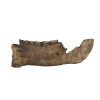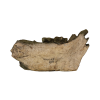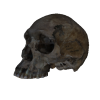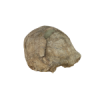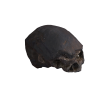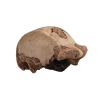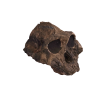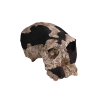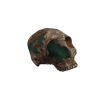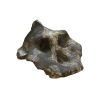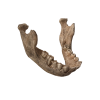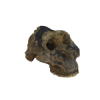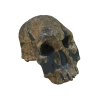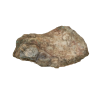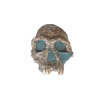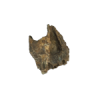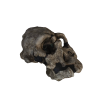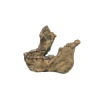This delicate and small skull of Homo habilis, was discovered in 1973 by Kamoya Kimeu. He spotted several fragments of the upper jaw with beautifully preserved teeth just visible on the rocky ground. With careful excavation by Richard and Meave Leakey, the cranium was reconstructed in the field. It is a relatively complete cranium although it is lacking part of the left side of the face. The upper dentition is incomplete although very well preserved on the left side. In spite of an extensive sieve in 1973, many years later geologist Frank Brown was visiting the site and recovered a small fragment of the eyebrow that had been missed and it stuck perfectly on to the original. This skull is similar to another partial cranium and mandible from Olduvai Gorge, OH 13, discovered by Louis and Mary Leakey’s team in 1961. They believed it represented Homo habilis “Handy Man” and must have been the tool-maker at Olduvai Gorge. The holotype specimen for this species is an incomplete mandible, OH 7, from Olduvai.
|
Homo habilis
KNMER 1813 Age approx. 1.90 Million Years
Digital Capture: Laser Scan 0 Comments Other Fossils to View |



